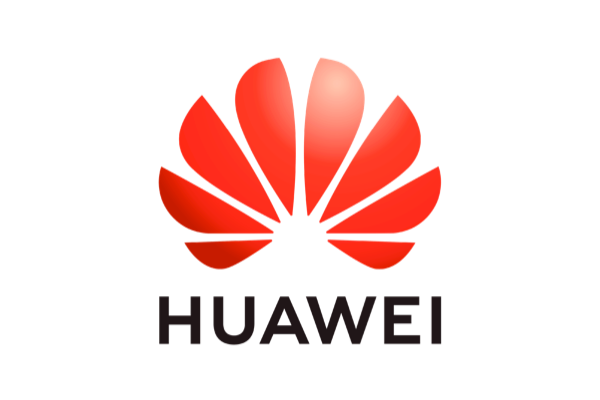Is L4S the real latency killer?
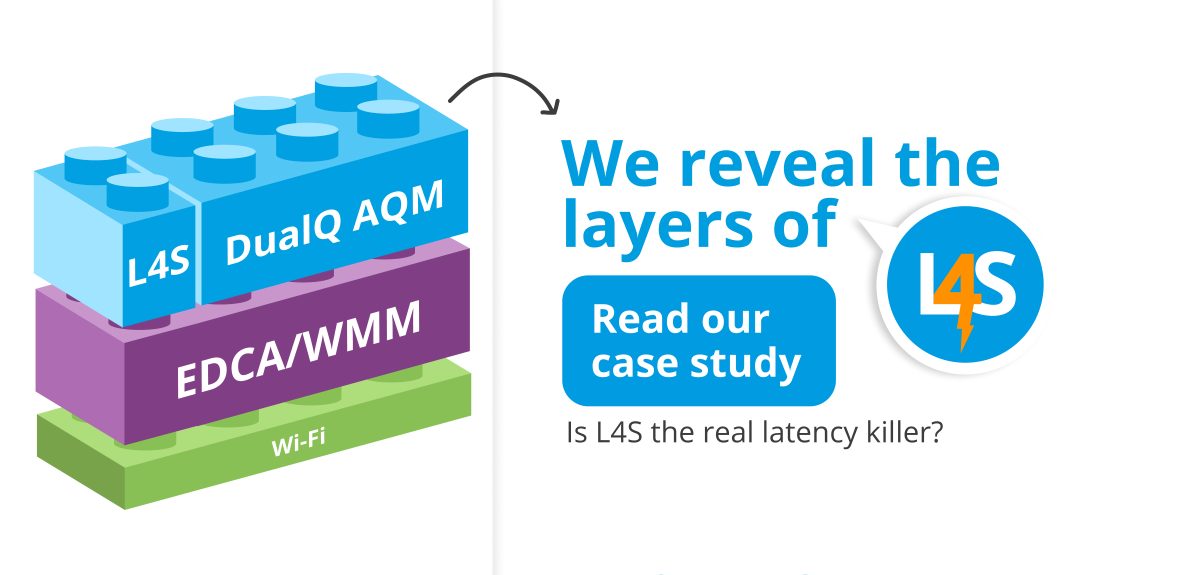
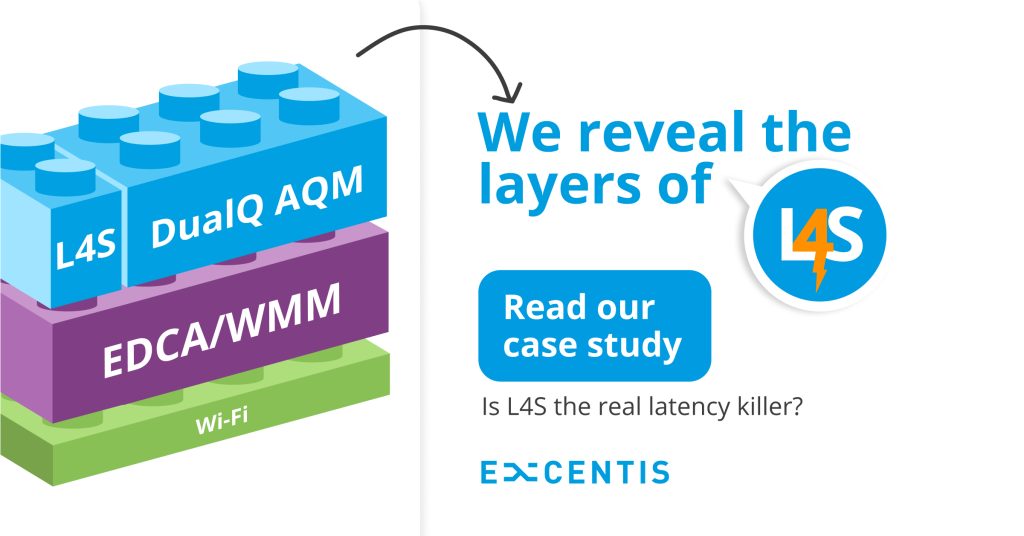
L4S Wi-Fi testing
Imagine this: You’re in the heat of a thrilling first-person shooter game, fully absorbed in the adrenaline-pumping action. Suddenly, your character dies without even seeing your opponent. Or picture yourself in the middle of a crucial video call, ready to secure a promotion, only to have your screen abruptly freeze. Before you get angry, consider this: The real issue might be latency.
Read the complete case study paper here
As Internet Service Providers (ISPs) race towards innovation, they’re placing more importance on low-latency services to enhance user experiences. At Excentis, we’ve made it our mission to tackle latency head-on. Recently, we put the latest low-latency technologies to the test, specifically L4S (Low Latency, Low Loss, and Scalable Throughput) and Wi-Fi 7, and published our findings in a white paper, “Unveil the Power of L4S and Wi-Fi 7 👨💻”. Expanding on our previous research, we’ve worked with Nokia Bell Labs to dig deeper into the impact of L4S on Wi-Fi network performance, culminating here. Together, we’re diving into the world of low latency to unlock the future of network performance.
Which building blocks are necessary to build the L4S technology?
Our study is like a grand experiment with toy blocks. We built it layer by layer, starting with basic Wi-Fi 6 setups. Then, we tapped into the power of Dual-Queue Coupled AQM (or DualQ AQM for short) to evaluate L4S performance. Finally, we dove into the MAC layer to configure latency-optimized EDCA/WMM parameters.
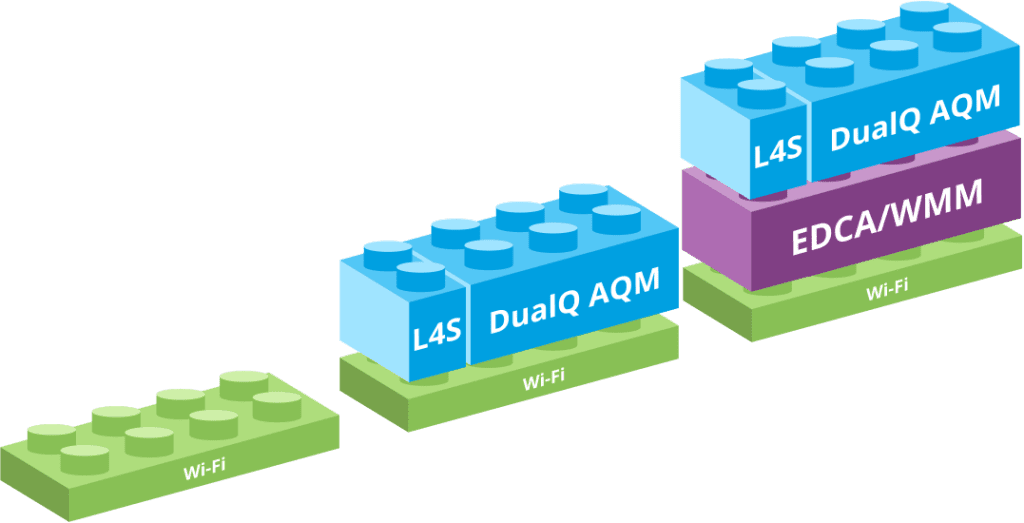
Game Plan
In our quest to assess the impact of L4S in real-world scenarios, we turned to Nokia Bell Lab’s Wi-Fi 6 access point and their renowned knowledge of various configurations, including L4S optimization. Additionally, we incorporated a Wi-Fi 7 access point and ByteBlower for traffic simulation.
Our testing environment is not your typical lab setting. Instead, we conducted all tests at the Excentis Wi-Fi house—a real-life dwelling situated in a remote location, devoid of external interference. This house is constructed with authentic building materials, featuring fully furnished rooms and household items that replicate a typical home environment.
By utilizing the Excentis Wi-Fi house, we ensured that our evaluations accurately replicate the conditions experienced by end-users. This approach allows us to precisely measure the impact of parameter changes and gauge the effectiveness of L4S optimization. In this immersive environment, we uncover the true potential of L4S in enhancing network performance and delivering unparalleled user experiences.
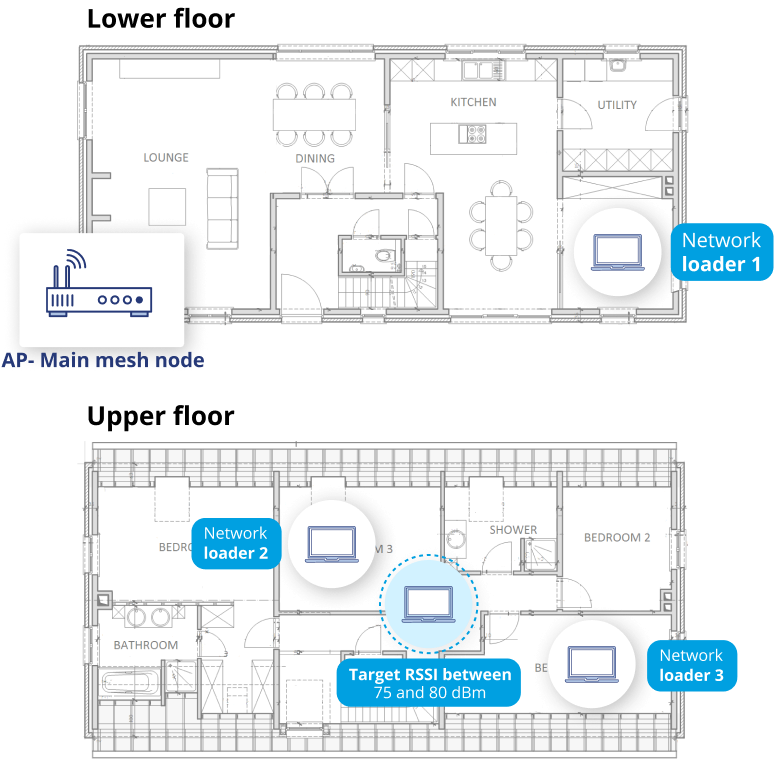
What did we test?
- Impact of L4S: Wi-Fi 6 client on a Wi-Fi 6 access point with L4S enabled, compared to the standard configuration.
- Impact of EDCA/WMM parameters: Wi-Fi 6 client on a Wi-Fi 6 access point with L4S enabled and optimized Wi-Fi configuration (low maximum backoff values for EDCA/WMM).
- Impact of L4S vs Wi-Fi 7: Comparison with Wi-Fi 7 to discern differences in performance and optimization.
In this case study paper, we’ve laid out a detailed plan for achieving low latency. It involves understanding the network, operating systems, and devices inside out. We fine-tuned everything using our knowledge in technologies like AQM, L4S, EDCA parameters for Wi-Fi WMM, and Wi-Fi 7 MLO.
Are you curious to see where our study took us? See the complete case study paper here.
But imagine if all the settings needed for L4S weren’t tested or set up correctly. It’s like building a tower with unstable blocks—your whole structure could collapse, making low latencies impossible to achieve.
With Excentis by your side, you can be confident in delivering the low-latency networking experience your user’s demand. We successfully reduced initial latency 90% for single-client and 70% for multi-client. Contact us
With L4S operating effectively, we’re here to help you highlight its performance to all your stakeholders! Allow us to showcase the before and after latency picture in your network.
- Category: AQM, ByteBlower, End-to-end latency testing, L4S, Latency, Traffic Analysis, Traffic Generator, Wi-Fi, Wi-Fi 6E, Wi-Fi 7, Wi-Fi ByteBlower, Wi-Fi Testing

















